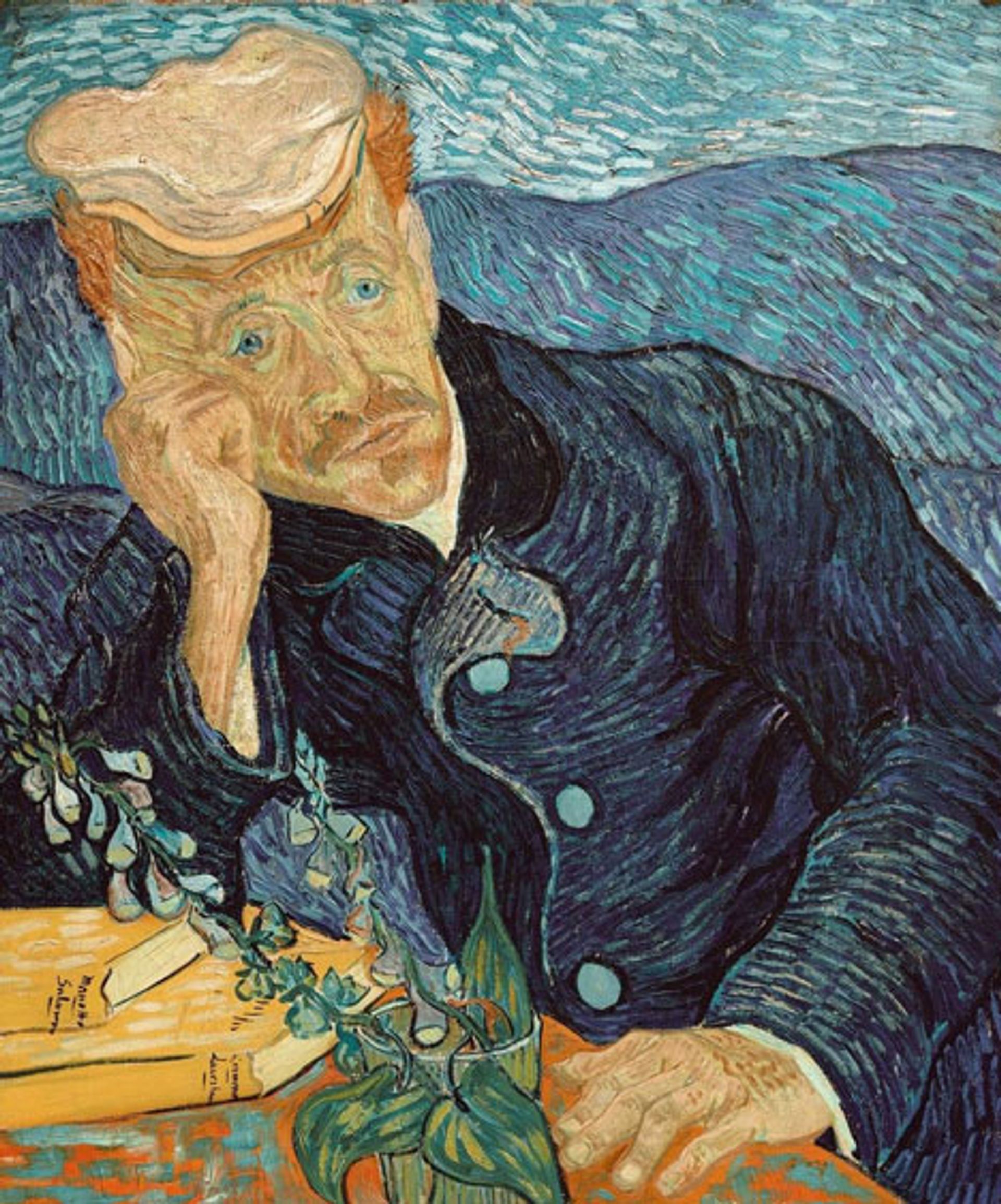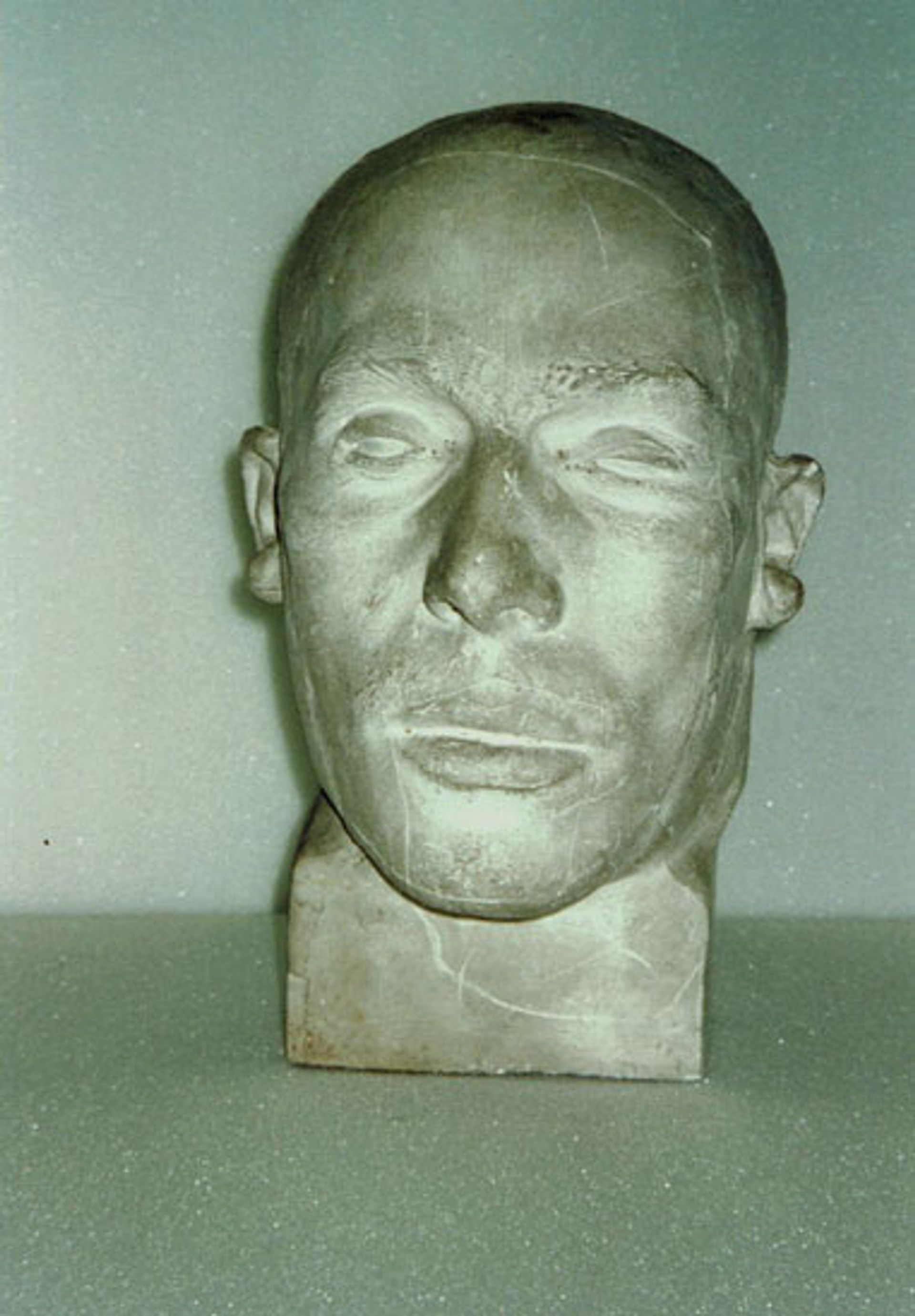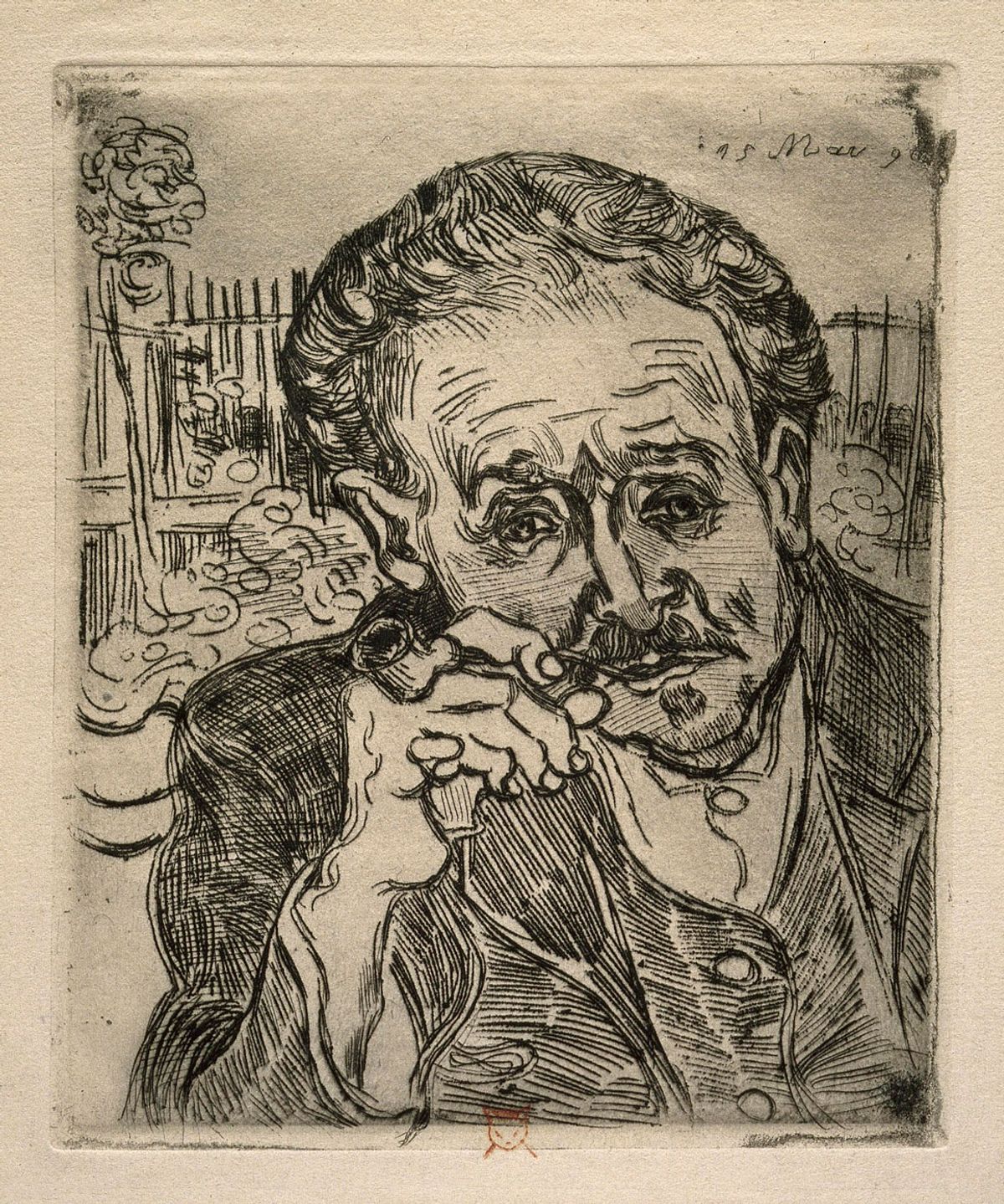Works by Van Gogh are sometimes found in unexpected places. But among the more unlikely of settings is a London medical museum, the Wellcome Collection. In 1927 Henry Wellcome paid £5 for the etched Portrait of Dr Paul Gachet.
This week London’s Wellcome Collection is in the news, since its comprehensive Medicine Man display has been abruptly closed, with the museum stating that it was “racist, sexist and ableist”. Opened in 2007, it included the Van Gogh print along with an astonishingly eclectic group of objects relating to the history of medicine in different cultures around the world. It was a thought-provoking cabinet of curiosities.
Van Gogh made only one etching, in the month before his suicide. It depicts Paul Gachet (1828-1909), a doctor living in Auvers-sur-Oise, the village just outside Paris where Van Gogh was staying. As well as being a notable medical practitioner, Dr Gachet was a friend of many of the Impressionists and an amateur artist himself. A week before making the etching Van Gogh had painted a powerful portrait of the doctor.

Van Gogh’s Portrait of Dr Gachet (June 1890) Image courtesy of Städel Museum, Frankfurt
Gachet’s son (1873-1962), also named Paul, later recalled how the etching had come about: “After an outdoor lunch in the courtyard, once the men’s pipes were lit, Vincent was handed an etching needle and a varnished copper; he enthusiastically took his new friend as the subject.”
Although Van Gogh had never previously etched, under the doctor’s guidance in less than half an hour he had completed a portrait of his host smoking his pipe. The two men then rushed upstairs to Gachet’s studio, where they went through the process of getting the acid to bite into the copper plate and then printed a few copies. Van Gogh was thrilled with the result. Further copies were printed by Gachet Jr many years later.

Photograph of Henry Wellcome (1890) Wellcome Collection, London
Henry Wellcome (1853-1936) was an American-born and London-based pharmaceutical entrepreneur with a passionate interest in the history of medicine. Thanks to his wealth, he was able to assemble a collection of medical-related material which eventually numbered 125,000 items. After his death many went to the Wellcome Collection, with some being loaned to London’s Science Museum.
In 1927 Wellcome’s curator, Peter Johnston-Saint, had approached Paul Gachet Jr to buy objects relating to his deceased father’s medical practice. The eclectic assortment included human bones which Dr Gachet had used in artistic anatomy lessons, early electro-medical equipment and a group of death heads of guillotined criminals (probably collected for phrenological purposes).

Plaster death head of guillotined murderer Arsène-Raymond Lescure (1855), owned by Dr Gachet Wellcome Collection, London (on long-term loan to Science Museum, London)
Most importantly, Wellcome bought the Van Gogh etching, paying 700 francs (then just over £5). Good examples now sell for more than £100,000.
The Wellcome’s example has on the bottom of the print the personal stamp of Gachet Jr, depicting a cat’s head in red. The Gachet family loved cats, and at one time they apparently owned 17.
There was to be an intriguing sequel to the story of the etching acquisition. In 1931 Gachet Jr approached Johnston-Saint, to ask whether Wellcome would publish an illustrated essay on Dr Gachet’s interests in “the domain of Art”. The translated article and ten images would be offered without charge.
Presumably the essay would have included an account of the links between the Gachets (father and son) and Van Gogh—with their memories of the artist’s last days and sudden suicide.
Unfortunately, Johnston-Saint declined the offer, responding that there was no certainty of publishing it in the near future. This was probably because the etching had been acquired as it depicted a remarkable doctor, and Wellcome and his curator had little interest in the artist, Van Gogh.
Wellcome therefore lost the opportunity to publish a first-hand account of the momentous events surrounding Van Gogh’s final weeks. It would not be until the 1950s that Gachet Jr began to disseminate detailed accounts of his memories.
As for Wellcome’s Van Gogh etching, it was presented as a highlight in the Medicine Man display. In 2016 it was taken off show for conservation reasons, to reduce its exposure to light, and was replaced by a reproduction.
We asked the Wellcome Collection whether the Van Gogh etching would return in the successor display to Medicine Man. The spokesperson’s response was hardly encouraging: “We are embarking on a major project to transform how the collection is presented over the coming years, informed by the museum’s programme and research. The process will amplify the voices of those who have been previously erased or marginalised from museums and bring their stories of health and humanity to Wellcome Collection’s heart.”




